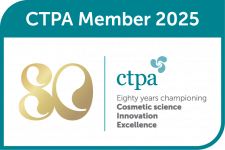In the world of cosmetics, keeping track of different formulations and ensuring consistency is crucial. One of the best ways to achieve this is by assigning product codes to each cosmetic product. But what exactly is the purpose of these codes, and what benefits do they offer?
The Benefits of Product Codes
- Clear Identification: A product code allows for the precise identification of a particular formulation. This is essential for maintaining consistency across different batches of the same product.
- Easy Updates: When minor changes are made to a product, such as tweaking an ingredient’s amount, the product code can be easily updated with a version number. This helps in tracking the evolution of the product without overhauling the entire documentation system.
- Flexibility with Names: Cosmetic product names may need to change for various reasons, such as trademark issues or marketing decisions. With a product code system, the name can change without affecting the associated documents, ensuring seamless transitions.
- Supports Good Manufacturing Practice (GMP): Product codes are a critical component of a GMP system. They help streamline tracking and documentation, ensuring that all processes comply with industry standards.
How Product Codes Work
A product code is assigned to a specific formulation, encapsulating the combination of ingredients and their quantities. This code remains consistent across different production batches. However, if there is a significant change in the formulation, such as a new ingredient or a different supplier, the product code can be updated. Minor changes are usually marked by adding a version number, while significant changes might warrant a completely new code.
Simplifying Documentation with Product Codes
Every cosmetic product should have a Product Information File (PIF). Using product codes to identify the formulation simplifies the management of these documents. If a product’s name changes, the PIF linked to the product code ensures that there is no confusion about which product the new name refers to. This system makes it easy to track and reference documents, regardless of any name changes.
Creating Product Codes
There is no universal format for product codes; they can be a mix of letters and numbers. Versioning can be managed using numerical (e.g., v01, v02) or alphabetical (e.g., -A, -B) increments. For example, a product developed on January 3, 2024, might have the code 240103-001v1, but it doesn’t have to follow any format – it could simply be the next incremental number in your own logging system.
Enhancing GMP with Product Codes
Product codes play a vital role in maintaining a Good Manufacturing Practice system. They help in tracking product development and changes efficiently, ensuring that all modifications are well-documented and traceable.
In summary, assigning product codes to cosmetic products is a strategic approach to ensure clarity, consistency, and compliance in product development and manufacturing. It simplifies documentation, allows for flexible naming, and supports industry standards, making it an indispensable practice for any cosmetic brand.
Safety Assessor Qualifications
MSc (Distinction), University of Strathclyde
BSc (Hons) Chemistry, University of Nottingham
Certificate - Safety Assessment of Cosmetics in the EU, Vrije University Brussels
Get in Touch
If you would like to discuss any of your products or ranges, please fill out our contact form





